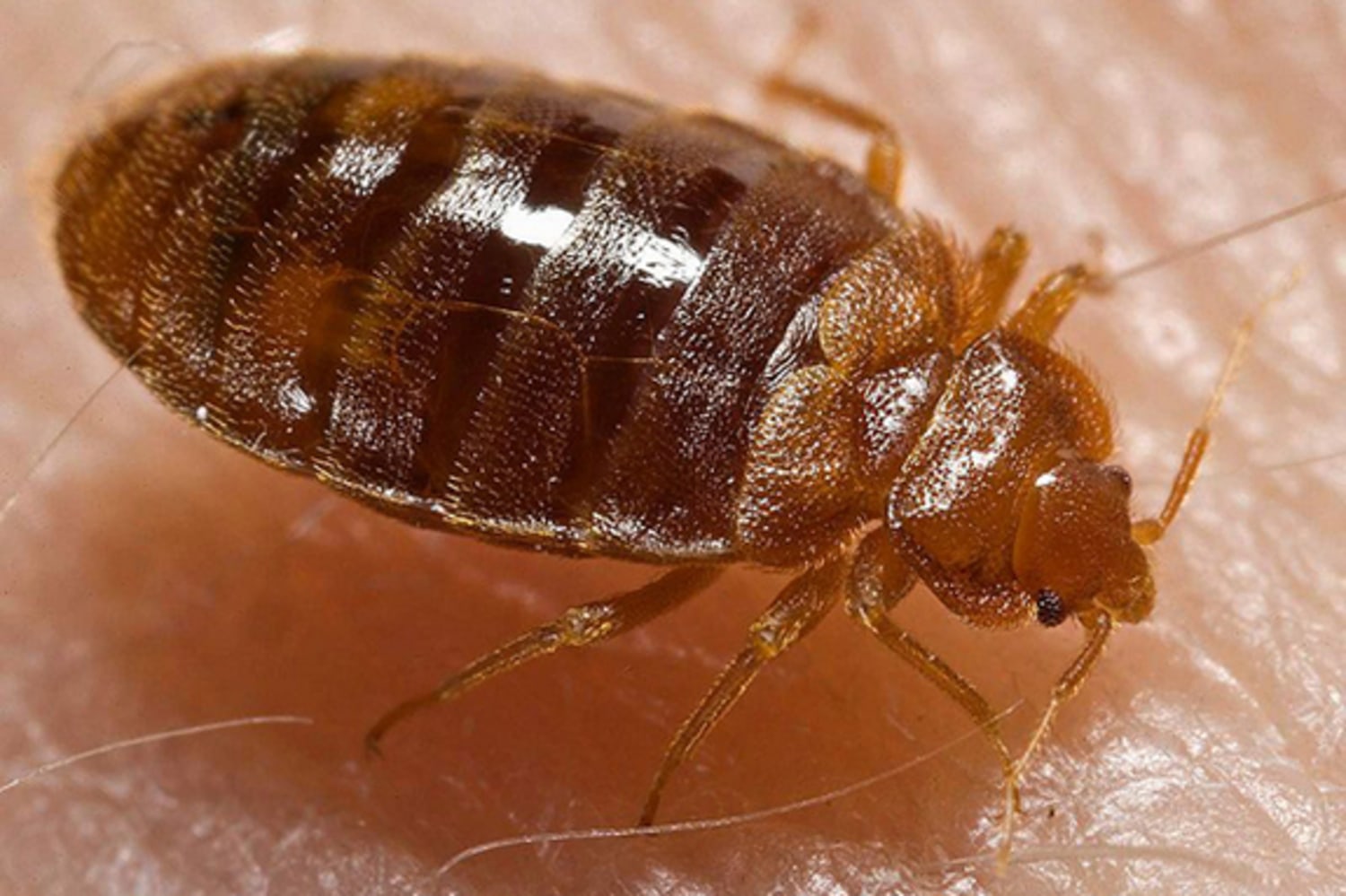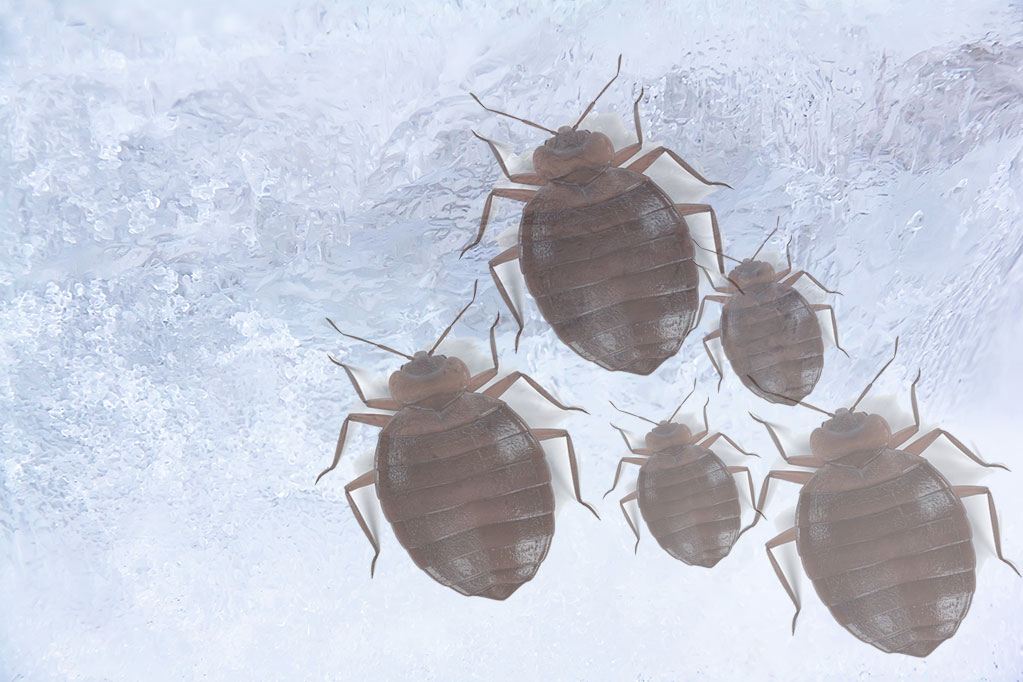Freezing bed bugs for at least 4 days kills them effectively. Freezing bed bugs for a minimum of 4 days destroys them completely, rendering them inactive.
Bed bugs are elusive pests that can infest homes, causing discomfort and stress. Freezing items that may have come into contact with bed bugs is a recommended method for eradicating them. By understanding the proper freezing techniques and duration required, you can effectively eliminate bed bugs from your living spaces.
This article will provide insights into how long items need to be frozen to kill bed bugs and offer practical tips for effective pest control using freezing methods.
Identifying Bed Bugs
Physical Appearance
Bed bugs are oval-shaped, reddish-brown insects, about 4-5mm in size.
They have a flat body when unfed but swell and become elongated after feeding.
Bed bugs have six legs and antennae and lack wings.
Signs Of Infestation
Look for visible red bite marks on the skin, especially in clusters.
Inspect mattresses, bed frames, and furniture for brownish stains or tiny eggshells.
- Musty odor in the room.
- Sightings of live bed bugs, especially at night.
Dark spots on bedding or walls due to bed bug fecal matter.
Freezing As A Bed Bug Treatment
When it comes to battling bed bugs, freezing is a method that has gained popularity due to its non-toxic nature and effectiveness in killing these pesky insects. Let’s explore how freezing works as a bed bug treatment and its effectiveness in eradicating these unwanted visitors.
How Freezing Works
Freezing bed bugs involves subjecting them to extreme cold temperatures to kill them. This process typically involves using specialized equipment or methods to lower the temperature below a level that bed bugs can survive, effectively eliminating them from your space.
Effectiveness Of Freezing
The effectiveness of freezing as a bed bug treatment can vary depending on various factors such as the duration and temperature of the freezing process. Properly executed freezing treatments have shown promising results in eliminating bed bug infestations, making it a viable option for those seeking non-chemical solutions.
Freezing Techniques
To effectively freeze bed bugs, it’s crucial to store infested items at temperatures below zero for at least 4 days. Freezing techniques can eliminate bed bugs and their eggs by disrupting their lifecycle, offering a non-toxic solution for pest control.
When it comes to getting rid of bed bugs, freezing can be an effective and chemical-free method. Freezing bed bugs at the correct temperatures can kill them and their eggs, preventing future infestations. In this section, we will explore both DIY freezing methods and professional freezing methods.
Diy Freezing Methods
If you’re looking for a cost-effective solution, DIY freezing methods can help you tackle a bed bug problem without breaking the bank. Here are a few techniques you can try:
- Sealing infested items in plastic bags and placing them in a deep freezer for at least 4 days can kill bed bugs.
- Using a handheld steamer to freeze bed bugs on surfaces such as mattresses, furniture, and baseboards.
- Placing infested items outdoors in freezing temperatures for several days can be an alternative DIY freezing method.
Remember, it’s crucial to monitor the temperature during the freezing process to ensure it remains consistently at or below 0°F (-18°C) for a sustained period of time.
Professional Freezing Methods
If you require a more thorough and efficient approach, professional freezing methods may be the best option. Pest control specialists are equipped with advanced freezing technologies and expertise to effectively eliminate bed bugs. Here are a few of the techniques they may use:
- Cryonite freezing: This method utilizes carbon dioxide in a solid form to freeze and kill bed bugs and their eggs instantly.
- Thermal remediation: Professionals use specialized equipment to raise the temperature in a room or a whole building to a level that kills bed bugs and their eggs.
- Freeze-drying: This technique involves freezing infested items and subsequently using a vacuum to remove the moisture, effectively dehydrating and killing the bed bugs.
Professional freezing methods provide a higher level of effectiveness and precision, and they ensure the entire infestation is thoroughly eradicated. Additionally, pest control professionals can provide guidance on preventing future infestations and offer comprehensive inspections to address any hidden bed bug populations.

Credit: www.nbcnews.com
Duration Of Freezing
When it comes to freezing bed bugs to eradicate them, the duration of freezing plays a crucial role in achieving effective results. Understanding the duration of freezing is essential to ensure that the bed bugs are completely eradicated, providing a bed bug-free environment.
Factors Affecting Duration
Several factors influence the duration required for freezing bed bugs effectively. These factors include:
- Temperature: Lower temperatures are more effective in killing bed bugs, meaning that the duration might vary based on the freezer’s temperature settings.
- Size of Infestation: Larger infestations may require a longer duration of freezing to ensure that all bed bugs are effectively eradicated.
- Bed Bug Life Stages: Different life stages of bed bugs may require different durations of freezing for complete elimination.
Recommended Freezing Time
The recommended time for freezing bed bugs is typically between 4 to 7 days. This duration is considered effective in killing all bed bug life stages, ensuring complete eradication.
It is important to note that consistent temperatures below -16°C (0°F) should be maintained during the entire freezing period to ensure the effectiveness of the procedure.
Preparing Items For Freezing
Preparing Items for Freezing is a crucial step in the battle against bed bugs. Before placing items in the freezer, it’s important to ensure they are properly cleaned and bagged, and delicate items are protected from the freezing temperatures.
Cleaning And Bagging Procedures
To start the process, cleaning the items is essential. Use a vacuum cleaner to remove any visible bed bugs, eggs, or larvae. After vacuuming, meticulously scrub the items with a stiff brush to dislodge any remaining pests and their eggs. Once cleaned, bag the items in durable plastic bags, ensuring they are tightly sealed to prevent bed bugs from escaping during the freezing process.
Protecting Delicate Items
Delicate items such as electronics, photographs, and artwork require special attention to ensure they are not damaged during freezing. Wrap these items in layers of protective padding such as bubble wrap or foam to shield them from the extreme temperatures. Place these items into a second sealed plastic bag to provide an extra layer of protection.
Monitoring And Assessing Success
Monitoring and assessing the success of your frozen items is crucial in effectively eliminating bed bugs from your home. By following proper inspection techniques and implementing necessary follow-up treatments, you can ensure that the freezing process is indeed effective in eradicating these persistent pests.
Inspecting Frozen Items
Inspecting frozen items plays a vital role in determining the success of the freezing treatment for bed bugs. It is important to carefully examine all items that have been frozen to ensure that any surviving bed bugs have been killed off.
When inspecting the frozen items, look for any signs of bed bug activity. These signs include live bugs, eggs, excrement, shed skin, or even the presence of a musty odor. Remember that bed bugs can hide in the tiniest of crevices, so it is crucial to thoroughly examine each item.
If any signs of bed bugs are found during the inspection, it is essential to take immediate action. Remove the infested items from your home and consult with a professional pest control expert to determine the best course of action for further treatment.
Follow-up Treatments
Follow-up treatments are an essential part of the bed bug elimination process to ensure that any remaining bed bugs are completely eradicated. In addition to freezing the infested items, additional treatments may be necessary to tackle bed bugs that may have survived or migrated to other areas.
It is advised to consult with a professional pest control expert to determine the appropriate follow-up treatments for your specific situation. These treatments can include applying residual insecticides, vacuuming, steam cleaning, or heat treatments, depending on the severity of the infestation.
Remember that bed bug control requires a comprehensive approach, and freezing alone may not be sufficient in all cases. By implementing proper follow-up treatments, you can increase the likelihood of successfully eliminating bed bugs from your home.
Preventing Bed Bug Recurrence
Bed bugs can be resilient pests, so it’s crucial to take proactive measures to prevent a recurrence. Here are some tips to keep these unwelcome guests at bay:
- Regular maintenance and inspections
- Keep your living space clutter-free.
- Inspect second-hand furniture before bringing it inside.
- Vacuum and clean your home frequently.
Consistent monitoring and upkeep are key in the battle against bed bugs. Stay vigilant with these practices:
- Inspect cracks and crevices for signs of bed bugs.
- Seal any entry points where bed bugs can infiltrate.
- Use mattress encasements to trap bed bugs.

Credit: www.bedbugs.org

Credit: www.massbedbugbusters.com
Frequently Asked Questions Of How Long To Freeze For Bed Bugs?
How Long Do You Need To Freeze To Kill Bed Bugs?
Freezing bed bugs for a minimum of 4 days at a temperature of 0°F (-18°C) can effectively eradicate the bugs and their eggs. This prolonged exposure ensures all life stages are eliminated, providing an efficient solution for bed bug infestations.
What Is The Recommended Duration For Freezing Bed Bug-infested Items?
For optimal results, it is recommended to freeze bed bug-infested items for at least 72 hours. This duration surpasses the life cycle of bed bugs, ensuring all stages, including eggs, are effectively exterminated and preventing reinfestation.
Can Freezing Be Used As A Diy Technique To Eliminate Bed Bugs?
While freezing can be an effective method to eliminate bed bugs, it’s essential to follow proper procedures. Freezing infested items for an extended period at 0°F (-18°C) can successfully eradicate bed bugs and their eggs, making it a viable DIY option for bed bug treatment.
What Items Can Be Frozen To Eliminate Bed Bugs?
Common items such as clothing, bedding, shoes, and stuffed toys can be frozen to eliminate bed bugs. Ensure these items are sealed in plastic bags before freezing them to prevent the spread of bed bugs to other areas. Additionally, electronics and delicate items may not be suitable for freezing treatment.
Conclusion
Freezing is an effective method for eliminating bed bugs. By subjecting these pests to temperatures below freezing, their survival rate decreases significantly. It is recommended to freeze infested items for at least four days to ensure complete eradication. The cold temperature effectively kills the bed bugs and their eggs, providing a safe and chemical-free solution.
Remember to seal the items properly to prevent reinfestation.
Related posts:

I’m MD Tanvir, and I bring years of expertise gained from working closely with pest control companies to the forefront. My journey in the industry has inspired me to launch Bug Battler, a platform aimed at equipping people with the know-how to combat pests autonomously. Through Bug Battler, I aim to empower individuals with practical insights to tackle pest infestations effectively.

